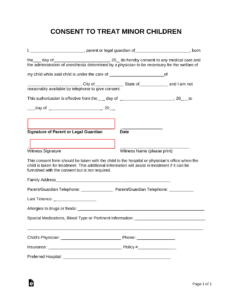When it comes to workplace safety or even the peace of mind in your own home, few things are as critical as a functional fire extinguisher. These vital devices are our first line of defense against small fires, potentially preventing minor incidents from escalating into full-blown disasters. However, an extinguisher is only effective if it is properly maintained and ready for action when the unexpected occurs.
That’s where the diligent practice of regular inspections comes in. Keeping a watchful eye on your fire safety equipment isn’t just a good idea; it’s often a legal requirement and a fundamental aspect of responsible safety management. To ensure these checks are consistent, thorough, and properly documented, having a reliable fire extinguisher inspection log template becomes absolutely indispensable for any individual or organization serious about fire preparedness.
Why Regular Fire Extinguisher Inspections Are Non-Negotiable
Ignoring fire extinguisher inspections is like hoping your car will run forever without an oil change; eventually, you’re going to run into trouble. For businesses, schools, or public buildings, neglecting these vital checks can lead to serious consequences, ranging from hefty fines for non-compliance with fire codes to devastating property damage or, worst of all, tragic loss of life if an extinguisher fails during an emergency. Insurance providers also look favorably on well-documented safety procedures, which can sometimes influence policy terms.
Beyond legal and financial ramifications, the primary reason for regular inspections is straightforward: ensuring the safety and well-being of everyone on the premises. A fire extinguisher that is undercharged, has a blocked nozzle, or a broken tamper seal is essentially useless. Without consistent oversight, these critical failures can go unnoticed, leaving people vulnerable when a fire breaks out and they reach for a device that simply won’t work.
Many jurisdictions mandate monthly visual inspections of all portable fire extinguishers, along with annual professional maintenance. These checks are designed to catch common issues before they become critical. It’s a proactive approach that prioritizes prevention and readiness over reactive damage control. Establishing a routine around these inspections is crucial for maintaining an environment where everyone can feel secure.
Key Elements to Check During an Inspection
- **Pressure Gauge:** Verify the needle is in the green zone, indicating proper charge.
- **Pin and Tamper Seal:** Ensure the safety pin is in place and the tamper seal is unbroken, showing it hasn’t been accidentally or maliciously discharged.
- **Hose and Nozzle:** Check for any obstructions, cracks, or damage that could impede the flow of extinguishing agent.
- **External Condition:** Look for signs of dents, rust, corrosion, or any physical damage that might compromise the cylinder’s integrity.
- **Date of Last Professional Service:** Confirm the annual maintenance tag is current and signed by a certified technician.
- **Mounting and Accessibility:** Make sure the extinguisher is properly mounted, easily visible, and unobstructed for quick access.
Utilizing a clear fire extinguisher inspection log template helps consolidate all these checks into a simple, step-by-step process. Each point can be ticked off, notes can be added, and the date and inspector’s initials can be recorded. This systematic approach eliminates guesswork and creates a consistent record that proves due diligence, providing a clear audit trail for compliance purposes and peace of mind.
This structured record-keeping is particularly valuable when managing multiple fire extinguishers across various locations or within a large facility. A standardized template ensures that every unit receives the same level of scrutiny, no matter who performs the inspection, making it an indispensable tool for comprehensive fire safety management.
Creating and Using Your Fire Extinguisher Inspection Log Template Effectively
An effective fire extinguisher inspection log template doesn’t need to be overly complex, but it does need to be comprehensive. It should include fields for essential information such as the extinguisher’s location, type, serial number, and the date of its last professional service. For each monthly inspection, you’ll want dedicated columns or rows to record the date of inspection, the inspector’s name or initials, and a checklist covering all the critical points like pressure gauge, pin and seal, nozzle condition, and general physical integrity. There should also be a space for notes to document any issues found and actions taken.
Implementing your log template successfully involves more than just filling in blanks; it requires a commitment to routine. Monthly visual inspections should be scheduled and consistently performed by a designated individual or team. This person should be properly trained on what to look for during a visual check and understand the importance of accurate record-keeping. The log itself should be stored in an accessible location, either physically near the extinguisher or digitally in a central safety management system, ensuring it can be easily updated and reviewed by relevant personnel.
Remember that while a log template covers your monthly visual checks, it doesn’t replace the annual professional inspection and servicing that a certified fire safety technician must perform. Your log should also include a section to record the details of these professional services, including the date performed and the company or technician responsible. This dual approach ensures both ongoing internal vigilance and expert external oversight, creating a robust safety program.
By consistently maintaining your fire extinguisher inspection log template, you’re not just fulfilling a bureaucratic requirement. You are actively contributing to a safer environment, ensuring that critical safety equipment is always ready to perform its life-saving function. It’s a small effort with potentially monumental returns, providing tangible evidence of your commitment to fire safety and giving everyone on your premises confidence in their protection.
Proactive measures in fire safety are simply non-negotiable. Having a reliable system for regular inspections, backed by meticulous record-keeping, is the cornerstone of any effective fire preparedness strategy. It ensures that when a moment of crisis arises, your first line of defense is not just present, but fully operational and ready to protect lives and property.

